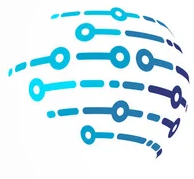Empowering Women in Fintech: The Rise of ElasBank and Beyond
A Transformative Journey
Vanise Zimmer’s journey began with a vision: to empower women through education and financial independence. After founding a university for women in Germany, she returned to Brazil, where she was struck by the limited aspirations of young women in the favelas. With two decades of experience studying the intersection of technology, gender, and behavior, Zimmer recognized a troubling trend: as careers in tech gained prestige, the number of women in these roles dwindled.
“In the early days of computer science, women made up a significant portion of the field,” Zimmer explains. “At the University of São Paulo, 14 out of 20 students in the first computer science class were women. However, as the profession became more recognized, that proportion declined.”
This realization spurred Zimmer to launch ElasBank, a fintech designed to create gender-equitable financial products tailored for women. Operating within the open banking ecosystem, ElasBank leverages artificial intelligence to curate ideal investment portfolios for its users, although it remains in its early stages and does not disclose customer numbers.
A Growing Landscape for Women in Fintech
Despite the challenges, the landscape for women in fintech is showing signs of improvement. According to the Female Founders Report 2021, only 5% of Brazilian startups are founded by women, but the fintech sector is more promising. A survey by the Brazilian Fintech Association (ABFintechs) revealed that 42% of established fintechs had at least one female founder.
This shift is crucial, as increasing female representation in financial services can directly impact gender balance in the workforce. As more women take on leadership roles, they create a ripple effect, empowering others to take control of their finances. Companies like ElasBank and the Mexican fintech Jefa are addressing the significant gap in financial services for underbanked women, providing them with the tools they need for financial independence.
Financial Services Designed for Women
The need for women-centric financial services is underscored by data from Temenos, which indicates that 35% of women in Mexico would switch banks for better service offerings. In Argentina, 25% of women use banking services for their businesses, with 60% prioritizing digital services and 24/7 support. In the Dominican Republic, 70% of women expect banks to enhance their digital offerings post-pandemic.
Maria Pulice, marketing director for Latin America and the Caribbean at Temenos, emphasizes the importance of flexibility in banking services. “Women are on the move—whether as mothers, wives, or entrepreneurs. They need banking solutions that fit into their busy lives,” she notes.
Zimmer, a mother of three, shares her mission to pave the way for other women toward sustainable financial futures. “Women often don’t engage in discussions about money and the economy,” she says. Her experiences in academia and finance led her to recognize the need for women to take charge of their financial destinies.
Bridging the Gender Gap in Financial Leadership
The financial services industry has long been male-dominated, with women holding less than 10% of leadership positions. However, as Malavika Chugh, CFO of Jefa, points out, women are stepping up as leaders in fintech, with five times more female-founded fintechs in Latin America compared to the global average. Yet, only 3% of venture capital investment goes to women-led companies.
Chugh highlights the challenges women face in accessing financial services. “There are 1.3 billion women worldwide without bank accounts, limiting their access to credit and savings,” she explains. Jefa aims to counter the trend of male-centric financial services by offering options that cater specifically to women’s needs.
Initiatives That Make a Difference
Having women in leadership roles encourages others to follow suit. Zimmer notes that women make up less than 30% of the workforce in traditional financial institutions, with even fewer in senior positions. To combat this, the Brazilian bank C6 has initiated programs to increase female representation in leadership roles and ensure gender parity in executive hiring processes.
C6 has also launched a mentorship initiative aimed at women in technology, led by Daniela Vieira. The program, which began with 15 participants, quickly expanded to 50, demonstrating a strong interest in mentorship among women in the sector.
Additionally, Vieira’s Test Girl initiative teaches young girls coding skills, addressing one of the significant barriers Zimmer identifies: the lack of confidence among women in STEM fields. “Women often struggle to trust their abilities in these areas,” Zimmer notes.
The Future of Women in Fintech
As the fintech landscape evolves, the potential for women to carve out their space in this industry is growing. Zimmer believes that women must embrace their destinies and explore the untapped market of services designed specifically for them. “This segment is still largely unexplored, and I believe more women will seize these opportunities,” she asserts.
With initiatives like ElasBank and Jefa leading the charge, the future looks promising for women in fintech. As more women step into leadership roles and create services that cater to their unique needs, they are not only transforming the financial landscape but also empowering future generations to take control of their financial futures.

